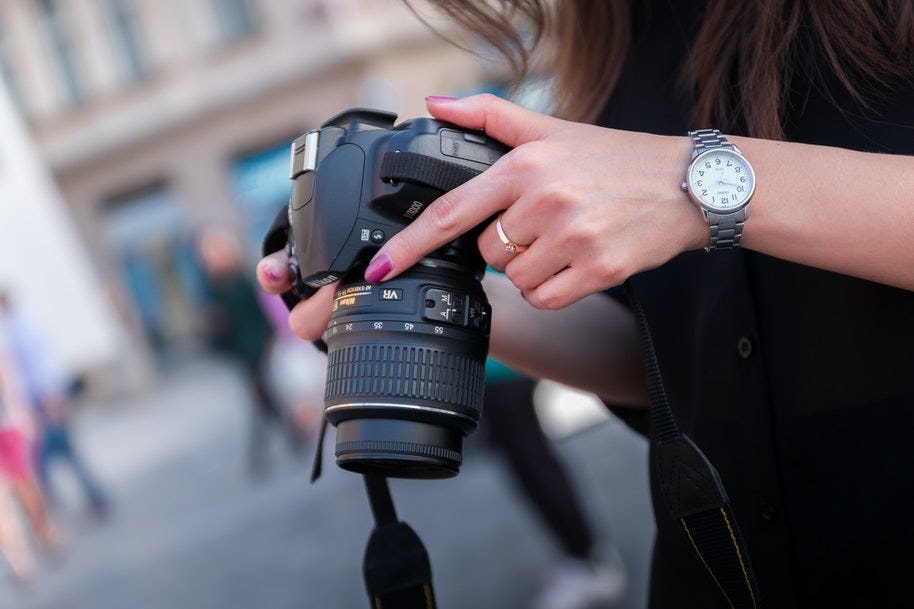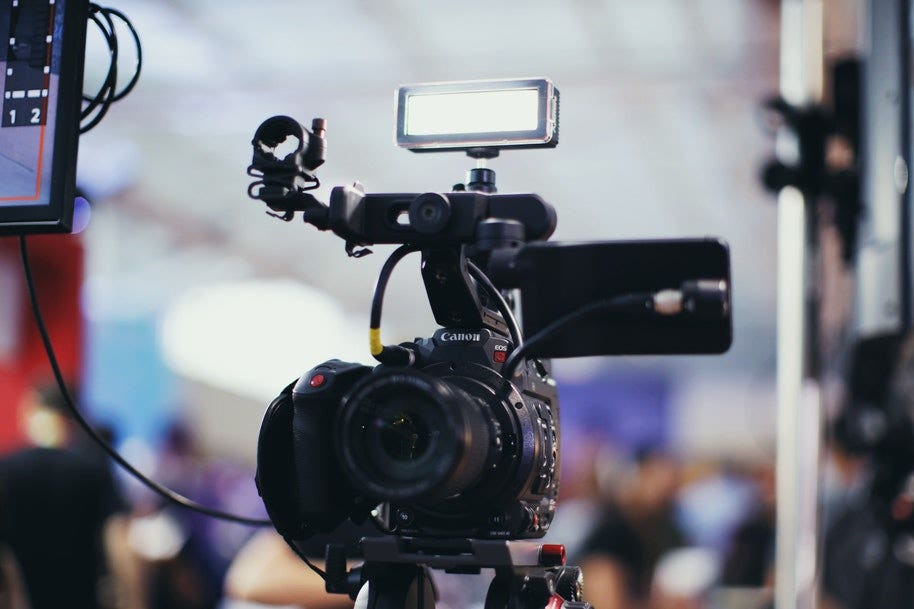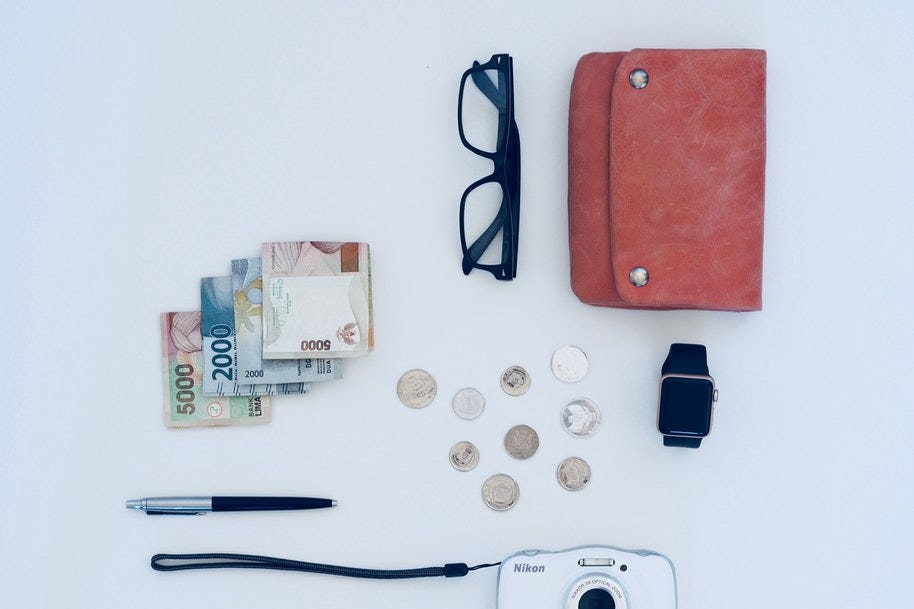
These days, the lines between DSLR cameras and point-and-shoot cameras are blurred.
Entry-level DSLR cameras aren’t necessarily better than high-end compact cameras. For example, the Sony Cybershot DSC-RX1R Mark II compact camera comes with a full frame sensor which is far superior to many entry-level DSLR cameras.
Such a broad range in quality from both types of cameras makes it difficult to form a fair and even comparison between all DSLR cameras and all point-and-shoot cameras.
In general, DSLR cameras are the best option for hobbyist and professional photographers who want (or need!) manual control options and a faster camera.
On the other hand, point-and-shoot cameras are great for casual, everyday photographers who just want to capture higher quality stills than what their smartphone camera can offer, but still enjoy automatic settings and a more affordable price tag.
Below, we’ve listed some of the most common differences between DSLR and point-and-shoot cameras. Just keep in mind that these differences are generalised and don’t make the perfect comparison between every model.
What is a DSLR camera?
DSLR stands for digital single lens reflex and is distinguished from point and shoot cameras by its interchangeable lenses and internal mirror mechanism.

DSLR cameras have in-body mirrors that reflect the light from the lens into an optical viewfinder. When you press the shutter button, the mirror lifts up so that the exact image you saw through the viewfinder is captured on the image sensor.
The solid build of a DSLR means it can contain larger sensors, which produce higher quality images, but there’s a less appealing trade-off in bulk and weight.
Advantages of a DSLR
You’d be hard-pressed to find a professional photographer who uses a point-and-shoot camera.
DSLR cameras are the preferred camera choice among the pros (although many are starting to favour high-end mirrorless cameras as well). There are several reasons why DSLR cameras are better for serious photography:
Better image quality
DSLR cameras can hold huge sensors which capture greater detail and let in more light. These larger sensors typically produce far superior image quality than your everyday point-and-shoot camera.
DSLRs also perform much better in low light scenarios, thanks to their more powerful image sensors, comparatively larger ISO ranges, and ability to change to a wide-aperture lens that lets in more light.
Faster speeds
DSLRs are quick to find their focus and can take multiple shots every second. They’re faster to start up, focus, and capture the shot.
Greater creative control
Though the manual controls can be confusing to a new photographer, DSLRs give you far greater creative freedom.
They're designed with manual operation in mind, which means manual controls like Shutter Speed and Aperture Priority are within easy reach (often with their own dials).
Better investment
DSLR cameras are typically known to hold their value better. To start, they’re built with solid construction (most mid-range to high-end DSLRs are made with magnesium alloy) that makes them more durable than compact digital cameras.
It’s also easy to upgrade your equipment. If you’re ready to level up, it’s possible to buy new lenses and accessories that will change your game, without needing to upgrade the entire setup.

Finally, when you’re ready to upgrade your entire camera bag, DSLR cameras tend to hold their value longer so you can get a better resale value.
Great depth of field
Portrait photographers, in particular, will appreciate the creamy bokeh DSLRs create. This is the beautiful rendition of portraits that separate the foreground subject from the background with smooth background blur.
DSLR cameras typically give you far greater control over your depth of field than point-and-shoot cameras.
Adaptability
Because you can change the lenses on your DSLR, you can use your camera for a range of different purposes.
Virtually every DSLR camera brand comes with a full suite of lenses from wide-angle lenses to superzoom lenses.
You’ll also have access to a large range of other accessories, such as filters that can be added to your lenses and flashes and external microphones that can be attached to your DSLR’s hot shoe.
Disadvantages of a DSLR
Now we've sung their praises, it may be hard to imagine there can be anything wrong with DSLRs cameras. But they’re not for everyone.
Costly
These days, there’s a great deal of difference between entry-level DSLRs and high-end DSLRs. In fact, you can pick up a DSLR for beginners for under $1000.
But on the other end of the spectrum, high-end DSLRs can be valued at several thousands of dollars.
You’ll likely also want to invest in a range of lenses, as well as other accessories and protective equipment.
It’s not just the equipment you need to think about either. Every time you change lenses, you risk getting dirt and dust into the mechanisms, particularly on the sensor. Repairs and maintenance costs can add up.
Complex controls
Unlike a point-and-shoot camera, which usually prioritises accessibility, a DSLR prioritises manual photography. If you’re unfamiliar with manual photography, there’s a steep learning curve.
DSLRs usually come with several more controls than the point-and-shoot photographer would be familiar with.
While there are automatic modes, they’re not what DSLRs were designed for and won’t give you the results.
Unwieldy
Because of their mechanisms, DSLR cameras are the largest of your three main digital camera types (between DSLR, mirrorless, and compact cameras).
DSLRs are heavy and cumbersome. Your shoulder and neck muscles can strain if you’re carrying your DSLR for long periods of time with just the shoulder strap. And they're so large, they usually need their own dedicated backpack for carrying.
Finally, the mechanisms inside the camera can be quite loud when you take photos, making it hard to take unobtrusive photos (although many DSLR cameras now offer special Quiet modes).
What is a point-and-shoot camera?
A point-and-shoot camera, also called a compact camera, is a petite digital camera that does away with the internal mirror and has built-in lens and flash to make it as compact and lightweight as possible.

Advantages of a point-and-shoot camera
Before the improvements in smartphone technology, point-and-shoot cameras were a commonplace item in the traveller’s backpack.
Today, they’re still popular among those who appreciate having dedicated equipment for their everyday photography.
Compact and lightweight
One of the biggest draw cards of point-and-shoot cameras is their portability. These days, compact cameras can be exceptionally small and easily pocketable. They’ll slip perfectly into your handbag or pocket.
Their size (and quiet operation) makes them discreet enough to carry around and use without others even noticing - perfect for candid photography.
User friendly
Unlike DSLR cameras, point-and-shoot cameras are for the masses. They’re designed so anyone can pick them up, turn them on, and start snapping (the term says it all: point and shoot!).
This means point-and-shoot cameras take perfectly good pictures automatically and with their Preset modes, which are fairly intuitive. There’s no big learning curve.
Affordable
The great advantage of a compact camera is that everything is built into the one design. You have an in-body fixed lens and a built-in flash.
All the key components are there so there’s no need to buy additional accessories, like alternative lenses, external flashes, or protective camera bags.

This already brings the cost of a compact camera down but what’s really enticing is the starting prices of digital compact cameras. You can pick up a simple point-and-shoot camera for as little as a few hundred dollars. Even high-end cameras offer great value on par with entry-level DSLRs.
Disadvantages of compact cameras
If point-and-shoot cameras are so great, why doesn’t everyone have one? These days, it’s easy to question whether a compact camera is worth it when smartphone camera technology is continuously improved.
While there’s certainly a place for compact cameras today, they do come with certain disadvantages which may make it easier for you to choose between DSLRs and point-and-shoots.
Lower image quality
Compact cameras have smaller sensors and lower ISO ranges than DSLRs, which means they can’t capture as much light in low light situations. You may get greater noise - or graininess - in photos taken in low light.
Alongside this, compact cameras don’t capture the same creamy bokeh you get in portrait photos taken with DSLR cameras. Compact cameras just aren’t as good at isolating subjects from their background as DSLRs.
On the other hand, while image quality in general is reduced with a compact camera, you’re unlikely to notice unless you try to enlarge your image.
Limited creative control
With just one lens and limited manual controls, compact cameras don’t allow the same level of creativity as DSLR cameras.
Compact cameras are almost fully automated. And where they do have manual controls over aperture and shutter speed, these controls aren’t always accessible, instead hidden away in the menu. The assumption is that most users will opt for auto modes.
Slow and sluggish operation
Many compact cameras are notorious for their shutter lag - the length of time between pressing the shutter and the image being taken.
You wouldn’t catch a sports photographer using a compact camera.
No upgrades available
With their fixed lenses, there will be no opportunity to upgrade or transform your compact camera once you’ve bought it. The only chance for an upgrade is to completely swap out the camera for a new one.
In essence, what you buy is what you get - for the duration of the camera’s life.
DSLRs vs point-and-shoot cameras
In general, you’ll typically find differences in image quality, performance speeds, price, and size between DSLRs and compact cameras.
DSLRs usually produce better photos, allow for more creativity, and offer more features and greater speed. But they’re more costly and require a steeper learning curve.
Compact cameras are usually easier to use (perfect in automatic modes), extremely pocketable, inexpensive, and ideal for everyday use.
Still not sure? Visit us in-store to talk to one of our experts about the best option for your needs.
